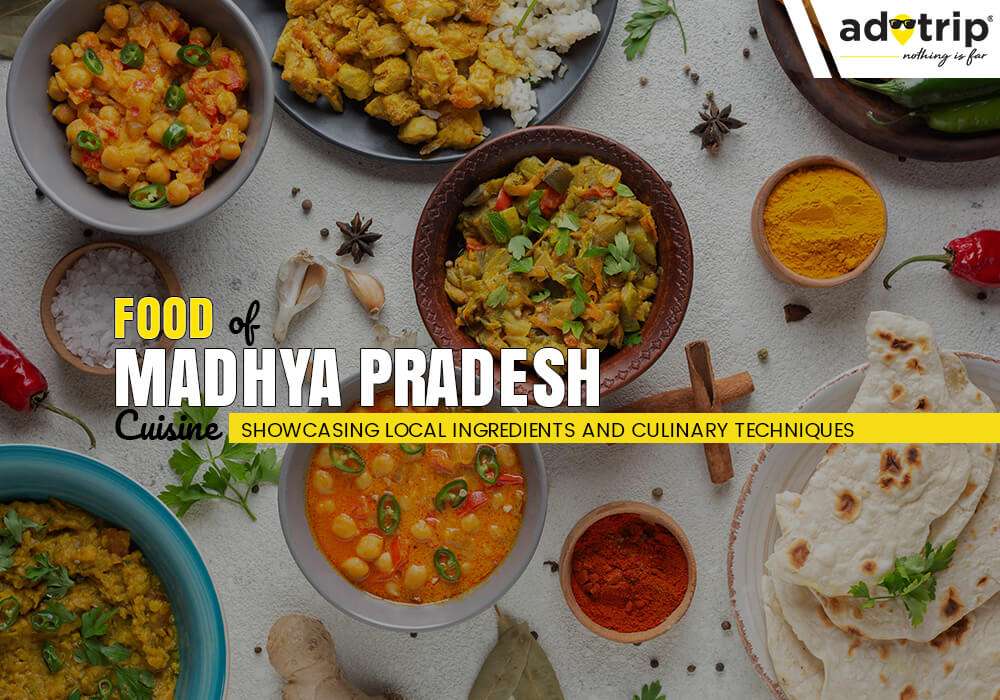
Last Updated At: 16-May-2025
15 Famous Food Of Madhya Pradesh You Must Try In 2025
Embark on a culinary odyssey through the heartland of India as we delve into the 15 famous foods of Madhya Pradesh. Known as the "Heart of India," Madhya Pradesh boasts a diverse tapestry of cultures, landscapes, and cuisines. From the royal kitchens of erstwhile kingdoms to the bustling streets of its vibrant cities, every corner of this central state offers a unique gastronomic experience. Join us as we unravel the secrets of Madhya Pradesh's culinary heritage, from spicy kebabs and tangy chaats to rich curries and decadent desserts. Whether you're a food enthusiast or an adventurous eater, these iconic dishes promise to tantalise your taste buds and leave you craving for more.
List Of 15 Famous Food Of MP
There are various regional cuisines throughout Madhya Pradesh. Wheat is more common throughout the north; rice is more common there. The cuisines of Madhya Pradesh's neighbours, Maharashtra, Rajasthan, and Uttar Pradesh, differ. Here are certain tribal aspects as well. While travelling eat traditional food of madhya pradesh . You must dip your spoons into some of these Famous dishes in Madhya Pradesh.
- Poha. A Plate of Delicious Poha Made With Flattened Rice, Turmeric, and Spices
- Daal Bafla. A Rajasthani Dish Featuring Lentils and Baked Dumplings
- Seekh Kebabs. Mouthwatering Seekh Kebabs, Made With Minced Meat and Aromatic Spices
- Bhopali Gosht Korma. Savour The Flavours of Korma
- Palak Puri. Spinach Infused Deep Fried Bread
- Bhutte Ka Kees. Grated Corn That Has Been Spice- Cooked and Cilantro-Topped
- Rogan Josh. A Scented Mughlai- Inspired Thick and Aromatic Lamb Curry
- Jalebi. A Coiled, Deep- Fried Treat Made With Fermented Batter and Sugar Syrup
- Sabudana Khichdi. Tapioca pearls Cooked With Potatoes, Peanuts, and Spices
- Bhutte Ke Kebab. Herb and Spice - Seasoned Grilled Corn Patties
- Lavang Lata. Dry Fruit, Coconut, and Cardamom- Flavoured Sweet Buns are Inside
- Keema Pulao. Rice That Has Been Prepared with Peas, Saffron, and Seasoned Minced Beef
- Chakki Ki Shaak. A Dish With Gravy Made of Yogurt and Dumplings Made of Wheat Flour
- Kusli. Poppy Seeds, Wheat Flour, and Jaggery are Used to Make This Classic Dessert
- Malpua. Rabri is Usually Served With Sweet Pancakes Made From Flour, Milk, and Sugar
1. Poha | A Plate of Delicious Poha Made With Flattened Rice, Turmeric, and Spices
A typical breakfast item in Madhya Pradesh, a state in central India, is poha. It is created from "poha," or flattened rice, cooked with various spices and vegetables after being rinsed. Lemon juice, coriander leaves, and peanuts are frequently used as garnishes on the dish to add flavour and tang. Poha is a staple of traditional food of madhya pradesh culinary heritage and is immensely enjoyed by both residents and visitors.
2. Daal Bafla | A Rajasthani Dish Featuring Lentils and Baked Dumplings
Madhya Pradesh, a state in central India, is known for its traditional and renowned food, daal bafla. It comprises bafla, baked dough balls made from wheat flour and semolina that have been boiled until fully cooked. Daal, a lentil soup spiced with spices and herbs, is eaten alongside these baflas. Chutney and ghee are often served alongside the dish. Daal Bafla is a favourite among the locals and a must-try for anybody visiting Madhya Pradesh because of its nutritious flavours.
3. Seekh Kebabs | Mouthwatering Seekh Kebabs, Made With Minced Meat and Aromatic Spices
Seekh Kebab is a must-try food in Madhya Pradesh, a state in central India known for its delectable cuisine. When making seekh kebabs, minced meat, usually lamb or chicken, is grilled on skewers and cooked to perfection. Fragrant spices, including ginger, garlic, and several other herbs, are added to the marinade to give the kebabs a rich and tasty taste.
4. Bhopali Gosht Korma | Savour the Flavours of Korma
A well-known cuisine from Bhopal, the capital of Madhya Pradesh in India, is called Bhopali Gosht Korma. Slow-cooking soft chunks of meat, frequently lamb or goat, in a rich gravy made with a mixture of aromatic spices, yoghurt, and cream results in this delicious dish. A local food in Madhya Pradesh famous food for lovers, the Korma is renowned for its rich and creamy texture and is often enjoyed with naan or rice.
5. Palak Puri | Spinach Infused Deep Fried Bread
A delicious Indian delicacy called palak puri combines bread that has been deep-fried with the health benefits of spinach. The dough is mixed with finely chopped spinach to give the puris its vibrant green colour. Popular for breakfast or as a snack, these crispy and savoury puris are occasionally offered with chutney or curry.
Read More : Things To Do In Madhya Pradesh
6. Bhutte Ka Kees | Grated Corn That Has Been Spice- Cooked and Cilantro-Topped
A delicious Indian dish called Bhutte ka kees is created with grated corn that has been perfectly cooked and spiced. The ideal combination of spices brings out the aromatic taste of maize. It is a delicious culinary experience made even better by the addition of fresh cilantro on top.
7. Rogan Josh | A Scented Mughlai - Inspired Thick and Aromatic Lamb Curry
A lamb curry with Mughlai ingredients, rogan josh is renowned for its flavorful aroma. This rich and juicy meal, which is slow-cooked with various spices, captivates the senses with each soft bite and is a real treat for curry aficionados and Indian food lovers.
8. Jalebi | A Coiled, Deep- Fried Treat Made With Fermented Batter and Sugar Syrup
Jalebi is a delicious deep-fried traditional food of madhya pradesh from fermented batter drenched in rich sugar syrup. It is a well-liked snack in the area due to its attraction of sweetness and crunch.
9. Sabudana Khichdi | Tapioca pearls Cooked With Potatoes, Peanuts, and Spices
In Madhya Pradesh, India, sabudana khichdi is a widely consumed meal. Potatoes, peanuts, and various flavorful spices prepare tapioca pearls. This flavorful, gluten-free dish has a distinctive texture and is frequently eaten as a filling breakfast or snack or during religious fasting.
10. Bhutte Ke Kebab | Herb and Spice - Seasoned Grilled Corn Patties
India's Madhya Pradesh is home to the delicious delicacy known as Bhutte Ke Kebab. These kebabs, made from grilled maize kernels combined with spices and herbs, are bursting with flavour. The meal, which is well-liked by locals and visitors, shows the region's culinary skills. These vegetarian kebabs, with chutney are a must-try for foodies visiting Madhya Pradesh.
Read More : Famous Festival Of Madhya Pradesh
11. Lavang Lata | Dry Fruit, Coconut, and Cardamom-Flavoured Sweet Buns are Inside
A traditional sweet treat from Madhya Pradesh, India, is called lavang lata. It is a delicious pastry with a crunchy exterior and a tasty centre of dry fruits and sugar flavoured with cloves. Lavang Lata is a prized dessert in the area, loved for its flavorful aroma and distinctive texture.
12. Keema Pulao | Rice That Has Been Prepared with Peas, Saffron, and Seasoned Minced Beef
Keema Pulao is a delicious and often consumed dish in Madhya Pradesh. It is a tasty rice dish made with fragrant basmati rice, fragrant spices, and minced beef. This meal showcases the state's rich culinary heritage by encapsulating regional flavours and using traditional cooking methods, making it a favourite of locals and tourists.
13. Chakki Ki Shaak | A Dish With Gravy Made of Yogurt and Dumplings Made of Wheat Flour
A popular vegetarian meal from Madhya Pradesh, India, is chakki ki shaak. It includes dumplings made of coarsely ground flour cooked in a hot curry of tomatoes, onions, and flavorful spices. The dish is filling, tasty, and well-liked in the area.
14. Kusli | Poppy Seeds, Wheat Flour, and Jaggery are Used to Make This Classic Dessert
A small town in India's Madhya Pradesh state is called Kusli. Its peaceful atmosphere and extensive cultural history enchant visitors as it is surrounded by stunning scenery. Kusli is an unusual location worth seeing, even if it is less well known to tourists, since it provides a glimpse of rural life and ancient customs.
15. Malpua | Rabri is Usually Served With Sweet Pancakes Made From Flour, Milk, and Sugar
India's Madhya Pradesh is home to the deliciously sweet dessert, malpua. These delicious treats are deep-fried and then dipped in sugar syrup after being made from a batter of flour, milk, and sugar. Malpua is a must-try dessert that exhibits the state's culinary diversity and love of sweets. It is frequently sweetened with cardamom and adorned with almonds.
Read More : Best Places To Visit In Madhya Pradesh
Conclusion
As our culinary journey through Madhya Pradesh draws to a close, the flavours and aromas of its famous foods linger on the senses. Each dish tells a story of tradition, heritage, and the rich cultural tapestry of this central Indian state. Whether indulging in the fiery heat of a Gwalior kebab or savouring the sweetness of a Malwa dessert, every bite offers a glimpse into the culinary soul of Madhya Pradesh. So, as you bid adieu to this gastronomic paradise, carry with you the memories of its iconic dishes, and let the taste of Madhya Pradesh continue to inspire your culinary adventures.
For planning your trip, Adotrip offers a wealth of information and travel support, including easy booking of flights, hotels, and tour packages.
With us, nothing is far!
Frequently Asked Questions About Madhya Pradesh Famous Food
Q1. Which dishes are considered iconic in Madhya Pradesh cuisine?
A1. The rich culinary legacy of the Madhya Pradesh region is reflected in some renowned dishes from the cuisine. Dal Bafla, a well-liked wheat dumpling served with dal; Bhutte Ka Kees, a fiery corn-based snack; Poha, spiced flattened rice flakes; Bhopali Gosht Korma, a savoury beef dish, and Malpua, a sweet pancake eaten with rabri are a few of these. These recipes give a delicious sense of the many flavours and culinary customs of Madhya Pradesh.
Q2. Can you tell me about the flavours and spices commonly used in Madhya Pradesh food?
A2. The recipes get flavour by including spices, including cumin, coriander, turmeric, red chile, and mustard seeds. Green chiles, garlic, and ginger are often combined to enhance the flavours. While ghee (clarified butter) is liberally applied for richness and flavour, tamarind and kokum are added. The exquisite combination of these spices stimulates the taste buds.
Q3. Are there any unique dishes or delicacies associated with specific regions of Madhya Pradesh?
A3. Yes, the many regions of Madhya Pradesh each have their unique specialities. For instance, the famed street food dish "Indori Poha" from Indore, created of flattened rice, onions, and a unique blend of spices, is a must-try. The must-try food in Madhya Pradesh is "Bedai" in Gwalior, a deep-fried bread with lentil filling. The mouthwatering "Bhopali Gosht Korma," a meat curry flavoured with sumptuous ingredients, is a speciality of Bhopal.
Q4. What are some popular sweets or desserts from Madhya Pradesh?
A4. The mouthwatering pastries and sweets from Madhya Pradesh are well-known. Popular ones include Khoya Jalebi, a syrup-soaked crispy sweet treat, and the rich and creamy Malpua, a sweet pancake served with rabri; Gajak, a confection made from sesame seeds and jaggery; Mawa Bati, a sweet dumpling prepared with condensed milk. People eat these treats on holidays and other occasions.
Q5. Are there any traditional beverages or drinks unique to Madhya Pradesh?
A5. Yes, the central Indian state of Madhya Pradesh has a few traditional drinks that are specific to its culture. One such drink is "Sattu Sherbet," which is both energising and nourishing and is made from roasted gram flour, spices, and water. "Lapsi," a fermented rice beverage enjoyed during festivals and celebrations, is another well-liked beverage.
Q6. Can you recommend some vegetarian and non-vegetarian dishes from Madhya Pradesh?
A6. There are several vegetarian and non-vegetarian dishes available in Madhya Pradesh. Popular vegetarian foods include "Dal Bafla," a spinoff of the well-known "Dal Bati," "Bhutte Ka Kees," which is spice-cooked crumbled maise, and "Sabudana Khichdi," which is a savoury tapioca dish. The dishes "Keema Pulao" (minced meat pilaf), "Jalebi Chicken" (hot fried chicken), and "Gosht Korma" (a sumptuous mutton curry) are non-vegetarian choices. These meals showcase the cuisine of Madhya Pradesh's many different qualities.
Q7. How does street food culture contribute to the culinary experience in Madhya Pradesh?
A7. The Street food of Madhya Pradesh improves the region's culinary experience. Street food reflects the state's thriving food culture and represents the essence of regional cuisine with its wide variety of tasty options. With mouthwatering chaats like pani puri and bhel puri and savoury snacks like kachori and samosa, Madhya Pradesh's streets offer a fascinating culinary experience that attracts locals and tourists.
Q8. Are there any food fairs or festivals dedicated to Madhya Pradesh cuisine?
A8. Yes, Madhya Pradesh commemorates its culinary legacy by hosting some festivals and food fairs. One such occasion is the Khajuraho Dance Festival, where attendees can enjoy mouthwatering regional cuisine and watch stunning dance acts. These events draw food lovers worldwide by giving the state's unique culinary heritage and flavour a platform for the showcase.
Q9. What is the famous food of Madhya Pradesh?
A9. The famous food of Madhya Pradesh is Poha. Poha is a traditional Indian breakfast dish made from flattened rice. It is cooked with onions, potatoes, and spices like turmeric, mustard seeds, and curry leaves, giving it a flavorful and aromatic taste. Poha is often garnished with fresh coriander leaves, sev (crispy fried noodles), and a squeeze of lemon juice for added tanginess. It is a popular street food and is enjoyed by people of all ages across the state of Madhya Pradesh.
Q10. How can tourists or visitors taste and savour the flavours of Madhya Pradesh cuisine?
A10. By visiting nearby street food stands, markets, and traditional restaurants, tourists and visitors can fully experience the flavours of Madhya Pradesh cuisine. It's crucial to try typical appetisers, including poha, sabudana khichdi, and kebabs. They can also understand unique cooking methods and experience local cuisine by participating in food fairs or culinary courses.
--- Published By Adotrip
Latest Blogs

Cash in the Wild: My Safari Adventure Across Kenya with Only...

One Day Picnic Spot Near Pune - Adventure, Trekking and Natu...

One Day Picnic Spots Near Mumbai - Monsoon, Adventure, Beach...

The Best Places to Go in Thailand in 2025
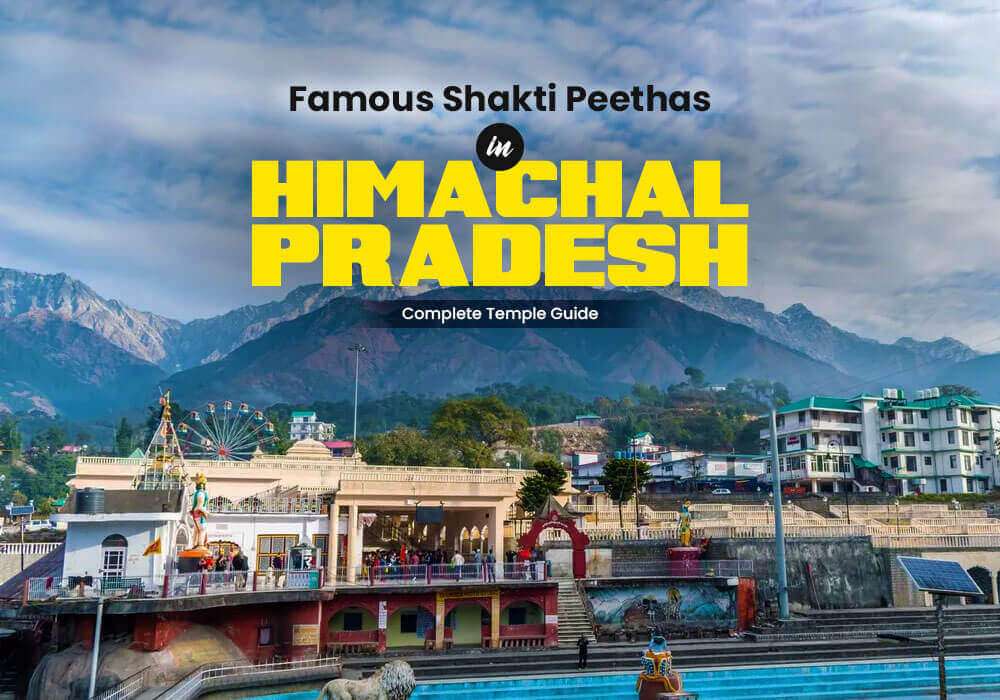


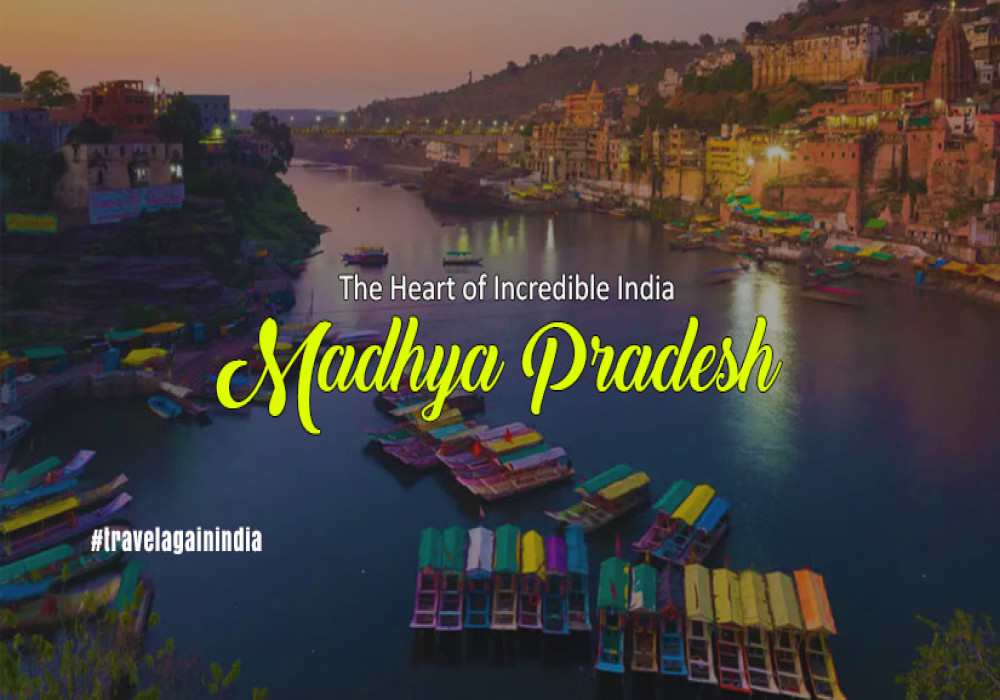
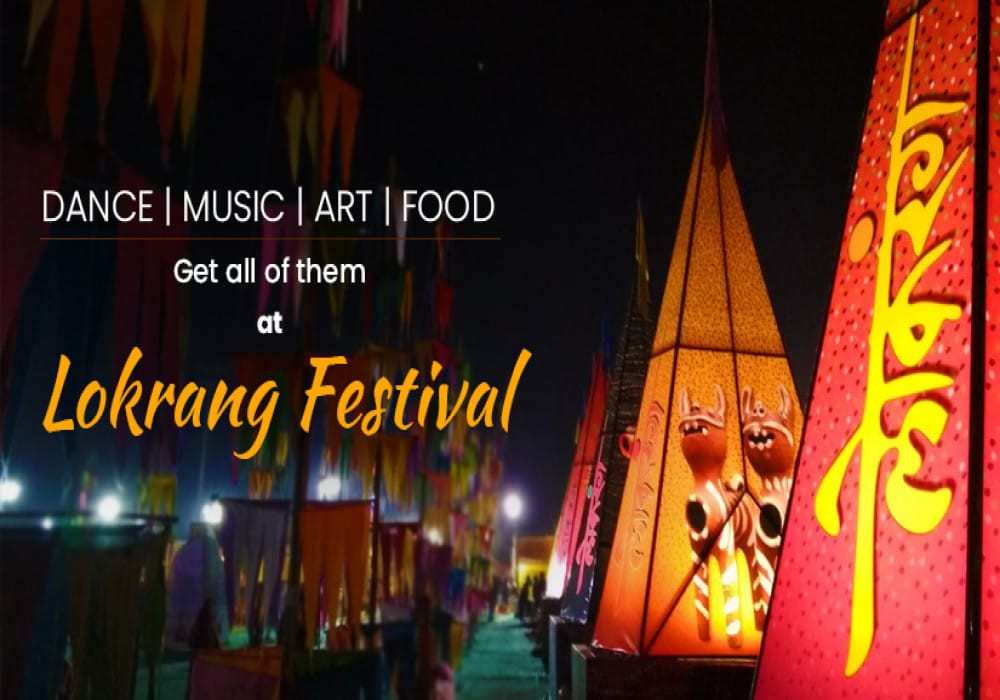

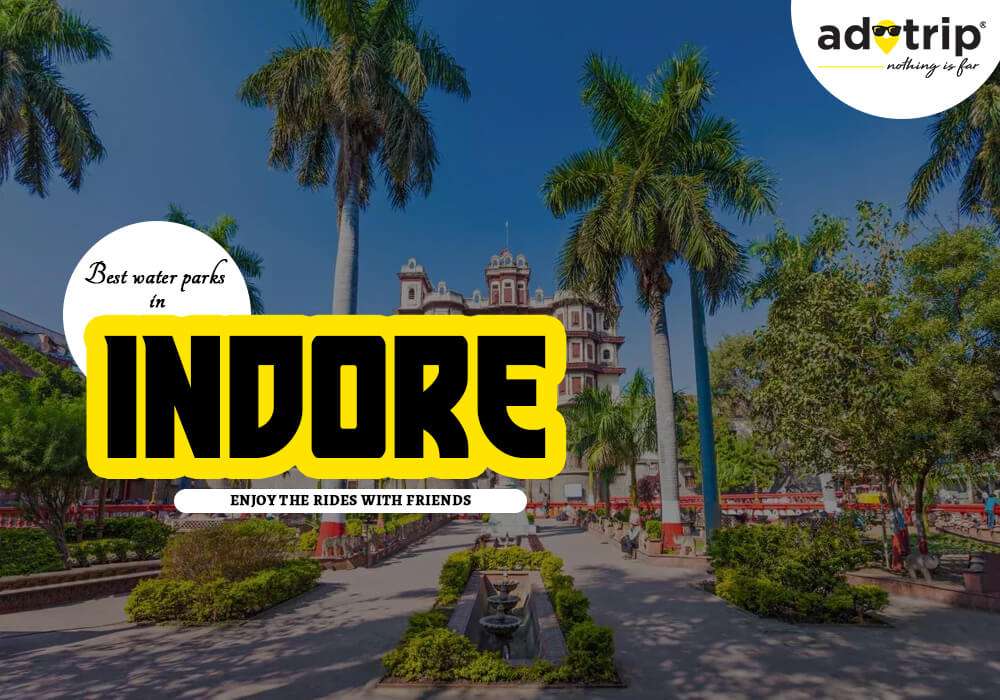

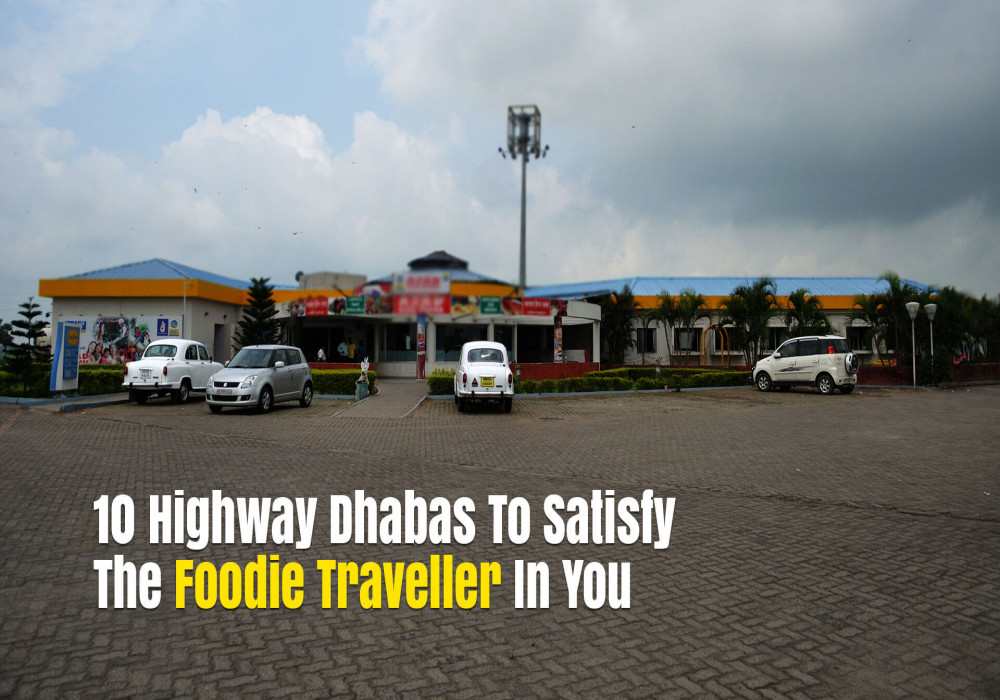
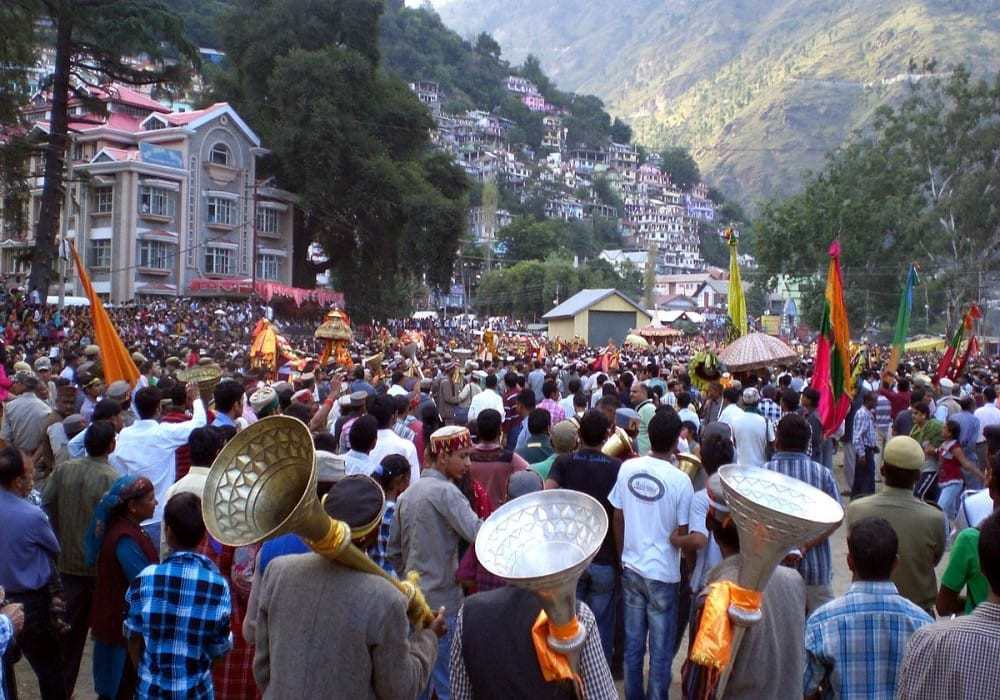



.jpg)
 Dubai
Dubai Malaysia
Malaysia USA
USA





